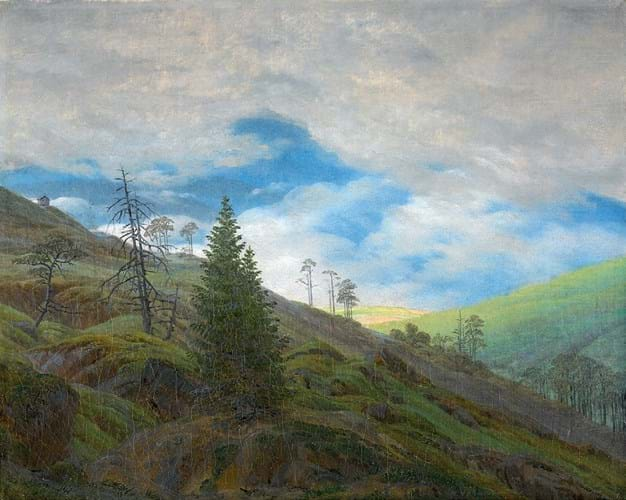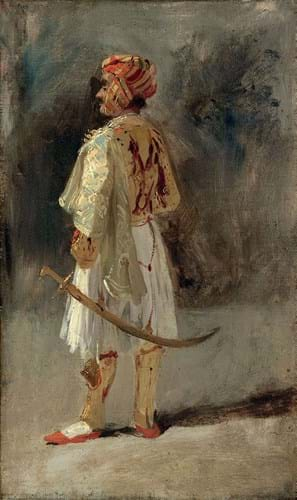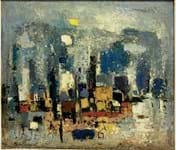
The emergence of the works by the Romantic landscape painter, generally considered the most important German artist of his generation, marked the first time in 12 years since an oil by the artist had appeared at Sotheby’s.
Offered on December 12, Landschaft mit Gebirgssee am Morgen (Landscape with mountain lake, morning) came from the collection of the late Dr Erika Pohl-Ströher, while Sonnenblick im Riesengebirge (Sunburst in the giant mountains), pictured above, had passed by descent from the pre-eminent 20th century German- Swiss art dealer Dr Fritz Nathan.
Friedrich strove to express mood and meaning through nature, his aesthetic informed by his Protestant upbringing and the idea of divine creation manifesting itself in the natural world.
The larger 2ft 4in x 3ft (71 x 93cm) oil on canvas, Landschaft mit Gebirgssee am Morgen, was the more expensive of the pair. Depicting a lone wanderer in a frock coat dwarfed by the expanse of the lake and the mountains beyond, it got away just below the bottom guide for £2.1m hammer. The sum matches the 25-year auction record set at Christie’s London for Spaziergang in der Abenddammerung (Walk at dusk), but with premium added makes it the most expensive work to sell at auction.
The other painting at Sotheby’s, of a rocky mountainous view with drifting clouds, was one of seven previously lost oils discovered by lawyer and art historian Carl von Lorck from 1941- 43 during his cultural survey of east Prussian noble houses. It was found in the von Hahn family seat of Schloss Basedow in Germany.
It drew heated competition against a £500,000-700,000 estimate and was eventually knocked down at £1.8m to the Saint Louis Art Museum in Missouri. Brent R Benjamin, the Barbara B Taylor director of the museum, said acquiring a “strong work” by Friedrich to compliment the museum’s German collection “had been a strategic priority for several decades”.
In the Ottoman service

Richard Parkes Bonington’s oil of the self-styled The Count of Palatino in the costume of a Palikar sold for £60,000 at Christie’s.
At Christie’s (25/20/12% buyer’s premium) equivalent sale on December 11, the top lot was an Orientalist painting by leading 19th century painter, Jean-Léon Gérôme (1824-1904).
Arnaut and two Whippets, a 14 x 9¾in (35 x 25cm) oil on panel, was painted in 1867 and depicts an irregular soldier in the Turkish army. Returning to auction nine years after it had sold in the same rooms for a premium-inclusive £541,250, it was knocked down towards its upper guide at £560,000.
Elsewhere, Richard Parkes Bonington’s (1802-28) oil of the self-styled The Count of Palatino in the costume of a Palikar, pictured above, made a top-estimate £60,000.
The 15¼ x 9¼in (39 x 23cm) oil on canvas was created in Eugène Delacroix’s studio in Paris where Bonington painted in the winter of 1825-26. The pair worked closely together, sharing compositions and sitters, including Palatiano.
A member of a prominent family from Corfu, Demetrius de Palatiano (1794-1849) was an ‘enfant terrible’, according to his family. Described in family records as ‘unstable and flighty’, it is said he narrowly escaped being beheaded while in the service of local Ottoman ruler and tyrant Ali Pasha.
Offered from the deceased estate of Mr HG Theodor Crone, the picture was sold to benefit the Crone Haver Droeze Fund in the Netherlands.
Between them, Sotheby’s and Christie’s sold £8.85m worth of pictures from 90 lots, with patchy selling rates of 65% (Christie’s) and 55% (Sotheby’s).














